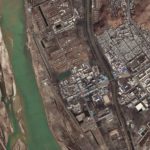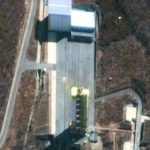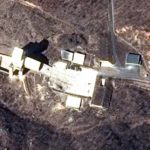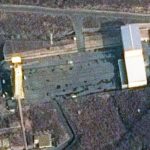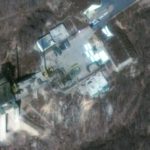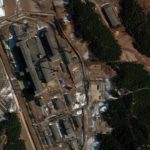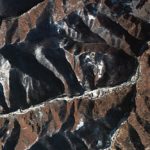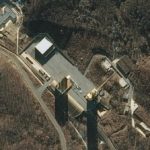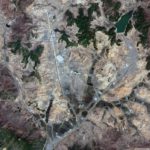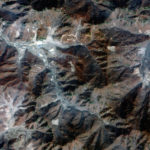March 25, 2019, by Joseph S. Bermudez Jr. and Victor Cha—
Satellite imagery acquired on March 21, 2019 and over the past six months indicates that the No. 17 Explosives Factory near Hamhung is active. While no significant changes have occurred with its infrastructure during this period, the factory was expanded during 2012 with the construction of a large mixing/casting facility capable of producing large solid-propellant rocket motors for ballistic missiles.
March 19, 2019, by Joseph S. Bermudez Jr. and Victor Cha—
While recent activity at the Sohae Launch facility appears to have returned it to operational status after DPRK dismantlement measures earlier in the summer, there has been no activity of significance at the vertical engine test stand or launch pad since early March.
March 9, 2019, by Joseph S. Bermudez Jr. and Victor Cha—
Commercial satellite imagery acquired on both March 6 and March 8, 2019, shows that North Korea has continued preparations on the launch pad and the vertical engine test stand at the Sohae Launch Facility. Based on past practices, these activities could be consistent with preparations for the delivery of a rocket to the launch pad or engine to the test stand; or, they could be North Korean coercive bargaining tactics after the failed Hanoi summit.
March 7, 2019, by Joseph S. Bermudez Jr. and Victor Cha—
Commercial satellite imagery acquired March 6, 2019—four days after the previous image—shows that North Korea has essentially completed the rebuilding of both the rail-mounted transfer transfer/processing structure on the launch pad and the vertical engine at the Sohae Launch Facility.
March 5, 2019, by Joseph S. Bermudez Jr. and Victor Cha—
Commercial satellite imagery acquired on March 2, 2019, shows that North Korea is pursuing a rapid rebuilding of Sohae (Tongchang-ri) Launch Facility at both the vertical engine test stand and the launch pad’s rail-mounted rocket transfer structure.
February 26, 2019, by Joseph S. Bermudez Jr. and Victor Cha—
Prior to the Trump-Kim summit in Hanoi, Beyond Parallel undertook a brief satellite imagery survey of other major North Korean WMD facilities to determine if there were any new developments... On the eve of the second summit meeting between President Trump and the North Korean…
February 15, 2019, by Joseph S. Bermudez Jr., Victor Cha and Lisa Collins—
Located 250 kilometers north of the DMZ, Sangnam-ni missile operating base is an operational missile base that houses a battalion- or regiment-sized unit equipped with Hwasong-10 (Musudan) intermediate-range ballistic missiles (IRBM). Multiple flight failures of the Musudan missile in 2016 could have also led the KPA Strategic Force to abandon the system and replace it with the more successful Hwasong-12 IRBM.
January 30, 2019, by Joseph S. Bermudez Jr. and Victor Cha—
As of January 20, 2019, commercial satellite imagery of the Sohae Satellite Launch Facility (Tongchang-ri) shows that no new dismantling activity has occurred at the vertical test engine stand or the rail-mounted processing building since August 2018.
January 21, 2019, by Joseph S. Bermudez Jr., Victor Cha and Lisa Collins—
Located 212 kilometers north of the DMZ, Sino-ri is an operational missile base that houses a regiment-sized unit equipped with Nodong-1/-2 medium-range ballistic missiles (MRBM). It is one of the oldest of approximately 20 undeclared missile operating bases and is reported to serve as the headquarters of the Strategic Rocket Forces Nodong missile brigade. It may have also played a role in development of the newest generation Pukkuksong-2 (KN-15) ballistic missile first tested or unveiled by North Korea on February 12, 2017.
November 12, 2018, by Joseph S. Bermudez Jr., Victor Cha and Lisa Collins—
Sakkanmol is an undeclared North Korean operational missile base for short-range ballistic missiles (SRBMs) and is one of approximately 20 undeclared missile sites and one of the closest to the demilitarized zone (DMZ) and Seoul, giving it the shortest flight time. Sakkanmol currently houses a unit equipped with SRBMs but could easily accommodate more capable medium-range ballistic missiles (MRBMs).
